In these confines, with a monarch’s voice
(FULL SPOILERS FOLLOW)
No film has an easy path from blank page to finished, distributed product, but even by the standard of most films, Gareth Evans’s sixth feature weathered an unusually tortuous road to release. Havoc was in pre-production as far back as the winter of 2020, even before the first season of Gangs of London dropped. In his interview with YouTuber Ross “Rossatron” Peacock, Evans describes what he did on Gangs of London as “dipping my toes back into action on a slightly smaller budget; a slightly smaller schedule.”
We action fans were given cause to wonder: if Gangs of London S1 E1 and S1 E5 are what Evans is able to achieve with DP Matt Flannery and stunt choreographer Jude Poyer in tow, with a limited budget and shooting schedule, what marvels could they accomplish in the absence of those limitations?
Following the release of Apostle, in 2021, Evans signed an exclusive deal with Netflix to create content for the streaming service. Havoc was to be the first of these agreed-upon projects, with Evans to direct his own original screenplay. The pitch at the time was: “a bruised detective must fight his way through a criminal underworld to rescue a politician’s estranged son, while unraveling a deep web of corruption and conspiracy that ensnares his entire city.”
Principal photography commenced in July of 2021, and wrapped in October of the same year after a 79-day shoot. Something to note about that date range is that Havoc was a COVID production (mask mandates and social distancing measures were legally enforced in Wales as late as August of 2021). Put a pin in that; we’ll be coming back to it later.
I assumed (naïvely) back in 2022 that Havoc would land in our lap any day now. Instead, we were met with month after month of radio silence, interspersed with the occasional cagey update on Evans’s Instagram feed. For the better part of 4 years, the film only ever seemed to be delayed further and further. Evans’s return to full-bore action filmmaking, already overdue when he started, began to feel frustratingly like vaporware.
It was straightforwardly a case of bad luck and bad timing that kept [Havoc] from audiences for so long.
The story, as it finally emerged, was that Havoc needed reshoots to iron out story details (a requirement, Evans notes in his conversation with the Empire podcast (beginning at around 47:50 in the previous link) that’s not rare in films at this level of budget). These necessary reshoots formed a bottleneck in the film’s post-production; first, because the performers had obligations that called them thousands of miles away from Wales in the wake of COVID; then exacerbated by the 2023 SAG-AFTRA strike. It actually wasn’t until July of 2024 that the film had all of its live-action photography locked down. It was straightforwardly a case of bad luck and bad timing that kept it from audiences for so long.
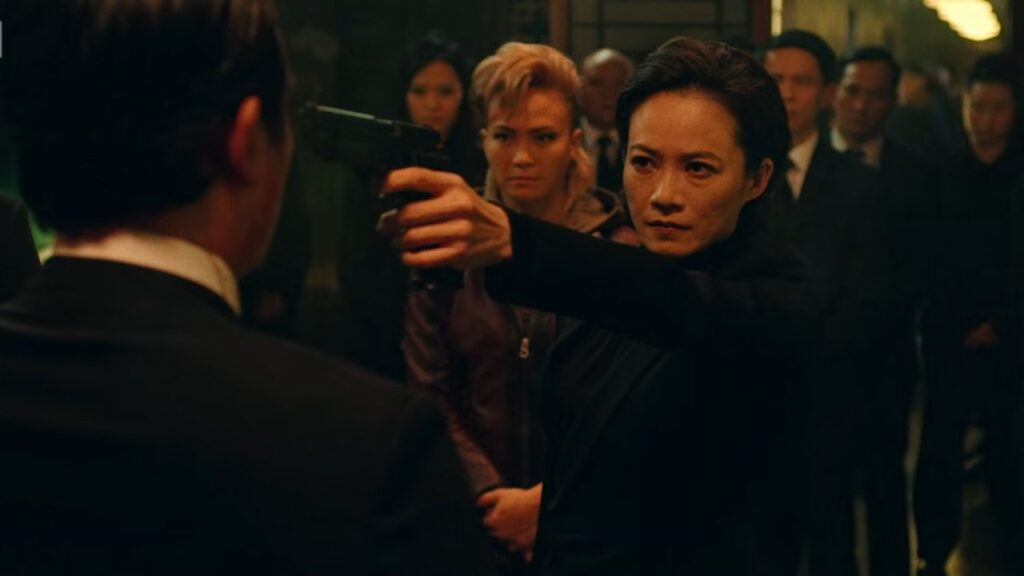
And so, it was on April 25th, 2025 that Havoc, with all of its post-production elements complete, finally dropped for the edification of 300 million global subscribers. And… it’s pretty damn good! An exuberant, brutal, fiery slab of stylised crime fiction; a nitro-charged neo-noir, blending influences from American 70’s thrillers by the likes of William Friedkin and Sam Peckinpah with the Heroic Bloodshed pictures of 80’s and 90’s Hong Kong, from directors such as John Woo, Ringo Lam, John Woo, Johnnie To, Tsui Hark, John Woo, Yuen Woo-Ping, John Woo, and John Woo. (Possibly also John Woo.)
The premise: Tom Hardy plays Walker, a homicide detective called away from his sad attempts to buy a gift for his estranged six-year-old daughter on Christmas Eve to investigate a mass murder. Nine bodies have been found riddled with bullets in Chinatown, their spilled blood coagulating amidst the heaped mounds of cocaine from a drug deal gone awry. Among the corpses is Tsui Fong (Jeremy Ang Jones), a local Triad big-shot. The CCTV footage from the shooting has glimpsed the faces of a young couple fleeing the scene; these are Charlie Beaumont (Justin Cornwell) and his girlfriend, Mia (Quelin Sepulveda).
Walker recognises Charlie’s face, though he initially denies it: he’s the son of the city’s incumbent mayor, the corrupt Lawrence Beaumont (Forest Whitaker). Walker has been handling Beaumont Sr.’s dirty laundry together with his cadre of crooked cop buddies, which includes Vincent (a deliciously slimy Timothy Olyphant); Jake (Gangs of London alumnus Richard Harrington); and Cortez (Serhat Metin – not giving much of a performance, because his character spends most of the movie in a coma).
It’s in the movie’s first big setpiece that we see how Cortez landed in just such a condition. Immediately after the film’s blood-red title card, the viewer is swept into a low-angle shot following a high-speed car chase. Multiple police cruisers hare through the night-lit city streets after a semi-truck, crashing through fences and jackknifing around corners. Charlie, Mia, and their friends are trying to escape in the truck with a shipment of washing machines full of cocaine – cocaine they hope to use to square their debt to Tsui. In a fit of desperation at the pursuit by Vincent and his crew, they open the back of the trailer and throw one of the coke-filled washing machines out at the pursuing cop car. The gambit works a little too well; the washing machine crashes straight through the windshield and into the driver’s seat, crushing Cortez under the weight of an industrial laundry unit. They get away… but they might have just made themselves into cop-killers.
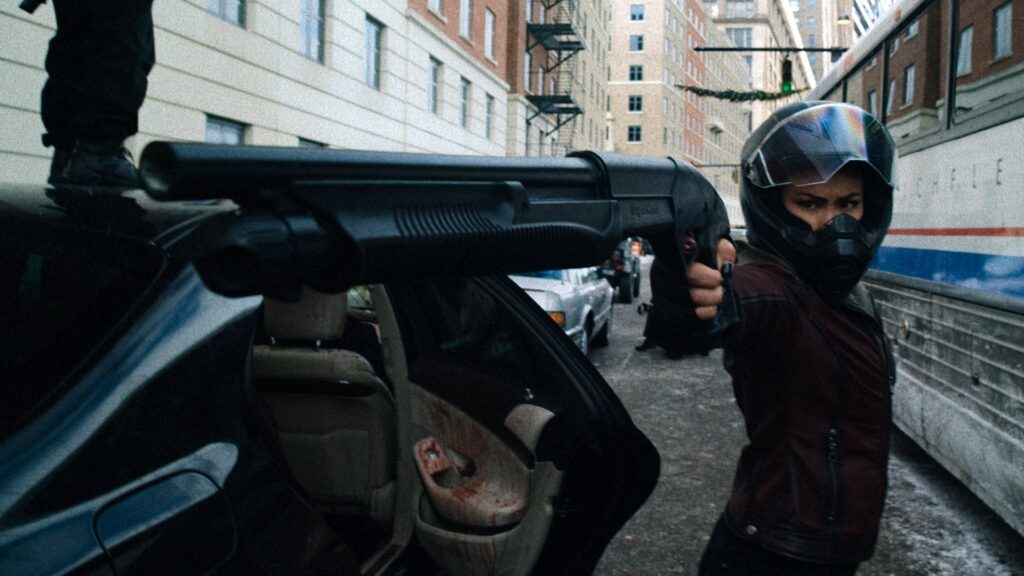
The first thing that any viewer is apt to notice about this car chase, coming to it off of Evans’s previous works, is how it looks. Havoc’s cinematography was handled, as usual, by Matt Flannery, and it has all the tells I associate with his collaborations with Evans; there’s a moment in this opening chase scene when a character is hanging off the back of the truck as its door swings open, and he’s framed from a bird’s-eye angle, the camera tilting in concert with the door’s angle against its hinge. The kind of sinuous, dynamic, fastidiously storyboarded camera movement that can trace its lineage all the way back to Merantau is present and accounted for.
What’s different – immediately, profoundly different – is the texture of the spaces the cars move through. That is to say: they were largely built in a computer (using Unreal Engine, no less). The whole environment has a slick, digitally-sweetened gloss about it. The police cruisers’ lights bathe the scene alternately in neon bursts of cherry red and azure blue. Particle-effect snowflakes smear across the screen as the camera charges through them. The surrounding highway and skyline have a laminated, pre-baked sheen to them that’s unmistakeable in its artificiality.
Havoc notionally takes place in the USA. The architecture, cars, police conduct, etc. indicate as much, and the cast all affect east-coast accents, with variously persuasive results (pour one out for German-Iranian actress Narges Rashidi, in her minuscule role as Walker’s long-suffering wife). Don’t be fooled, though: under the hood, this is quite a British movie, and more specifically a Welsh one. The move was shot in its entirety in Wales, on a combination of studio sets and locations such as Cardiff, Swansea, Bridgend and Port Talbot. Extensive CGI was used to camouflage them as a bustling metropolis on the other side of the Atlantic.
Ever since returning to his birthplace from Indonesia in 2015, Evans seems to have made it a personal project to build a viable film industry in his homeland, almost from the ground up. His business partner, LA-based producer and XYZ Films co-founder Aram Tertzakian, describes the enthusiasm to film in Wales as being motivated somewhat by patriotic fervour. For what it’s worth, the project seems to be working: Jack Sargeant, the Welsh Minister for Culture, Skills and Social Partnership has spoken about the economic and reputational benefits of the Havoc shoot in glowing terms.
Havoc takes place in a space that feels curiously abstract.
As to what this love of hearth and home means for the finished product: Havoc takes place in a space that feels curiously abstract. The city where it’s set is unnamed, and by the filmmaker’s own account, is meant to be a sort of composite of east-coast hubs; New York; Boston; Philadelphia; Detroit. It’s America, re-conceived as a dystopian fantasy from 3,000 miles distant; a playground built from the aggregated details of decades of crime fiction. There are elements of mise-en-scène that almost feel cyberpunk; the glowing highlights on the masks Charlie’s crew wear during their flight from the law; the neon-orange lighting in the club basement where Tsui is shot, with mounted TV screens displaying montages of 80’s anime. For all that Evans pays lip-service in interviews to Point Blank and The French Connection and Michael Mann’s Thief, the end result looks closer to something that David Ayer might have made, or even (whisper it) Zack Snyder.
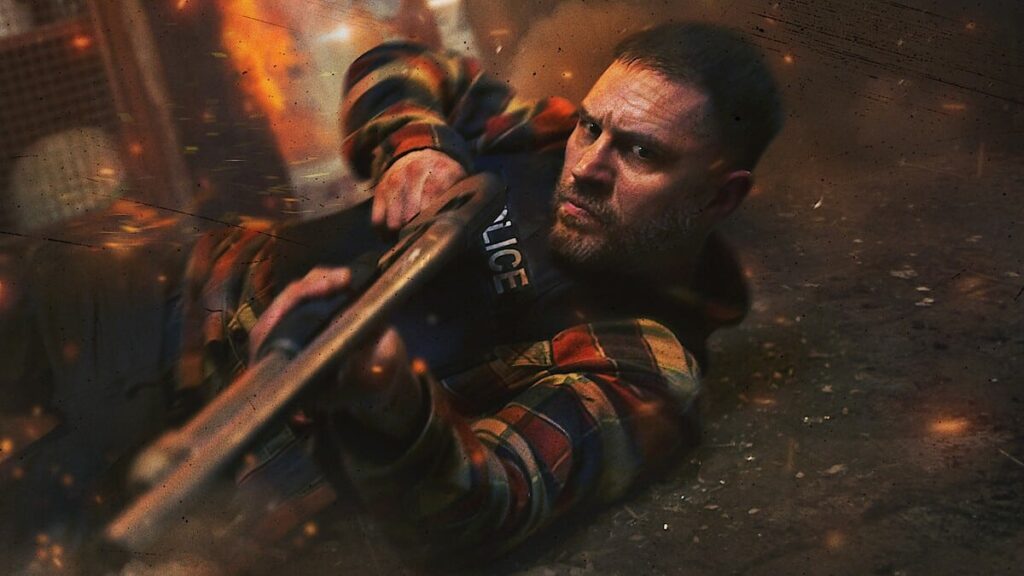
I was ambivalent about this aesthetic at first. Havoc’s opening chase scene, as slick and kinetic as it is, doesn’t have the oomph and the crunch of The Raid 2’s Bruce Law-coordinated car chase, filmed on actual roads in Jakarta, with actual vehicles getting the shit smashed out of them. In time, though, I came to see Havoc’s strident artificiality as more of a feature than a bug. Evans, as I’ve written in the past, is a pastiche artist; a poet of archetypes, twisting and contorting and remixing the movies he watched with his Dad growing up. There’s never a point when Havoc’s aesthetics feel careless. The hyperreality of the city underscores the melodrama taking place within it.
(If anything, Havoc makes me want to see what Evans could do with an actual cyberpunk movie. If you’re going to make a synthetic, surreal facsimile of America, then lean into it and give your characters futuristic gadgets and weapons!)
And what melodrama! The story is complicated by the arrival of Tsui’s mother, Clarice Fong (Yeo Yann Yann), an imperious Triad boss who responds to her son’s death with all the mercy and equivocation of a thermonuclear bomb. After identifying her boy’s corpse, she confronts his second-in-command, Ching (Sunny Pang) at the crime scene. Without flinching, she grabs a pistol from the belt of one of Ching’s bodyguards, and shoots all three members of his protection detail dead on the spot.
Unblinking, she presses the gun against Ching’s trembling, deferential forehead. He swears that Charlie Beaumont and his girlfriend were responsible for Tsui’s murder, and Clarice buys his story. Which is bad news, because of course, Ching was the one who actually ordered the hit on Tsui… in partnership with Vincent and his crew, who carried it out.
This is Heroic Bloodshed, baby; as pure an expression of the genre as there’s been since Hard Boiled came out in 1992.
This is Heroic Bloodshed, baby; as pure an expression of the genre as there’s been since Hard Boiled came out in 1992. The theatre of grand gestures of loyalty, and equally grand betrayals; where the act of pointing a gun, and the decision to fire or not fire, are assigned incalculable dramatic weight.
Walker, then, has to find Charlie and Mia before either Clarice’s men or Ching’s men or Vincent’s crew get to them first, and if he fails, Lawrence has enough dirt on him to land him in prison for the rest of his days. No pressure, then.

It’s a film of two halves; roughly the first fifty-five minutes are spent on build-up and place-setting, the various interested parties scrambling around and past one another to track down Charlie Beaumont, the Magnificent Human MacGuffin. I’ve seen criticism from some early reviews of the movie that it’s overly convoluted; an attempt to squash the gangland skulduggery of The Raid 2 down into two-thirds of that movie’s runtime. Here, I have to admit my perspective is biased. I was following this movie’s production so closely that by the time it came out, I already had a pretty good handle on who the central characters were and their various dynamics, so I didn’t find the plot particularly hard to follow.
Mostly, I was impressed by just how economically Havoc introduces something like two-dozen characters and, like, nine separate agendas, and juggles them so effectively in the scene-to-scene editing. What each character wants is clear, and they all consistently take decisive, concrete action to accomplish their goals. Each scene builds on the last and feeds organically into the next, steadily but consistently rising to a boil. The rhythm is actually quite similar to the plottier episodes of Gangs of London. (But one of the good ones, like S1 E4, or S2 E7.) There’s a consistent atmosphere of tension and dread, anticipating how all these different interests will inevitably converge and come into conflict. (The atmosphere is reinforced by Aria Prayogi’s score. Credited solely here as composer in the absence of his longtime collaborator Fajar Yuskemal, the music in Havoc sounds a lot like the duo’s work on Gangs of London; ominous, droning cello and double-bass, spiced up in this case with some free-jazz saxophone for that added noir flavour.)
Brief flare-ups of violence, like Walker brutally interrogating a survivor of the Chinatown massacre, or Clarice’s attack on Lawrence’s convoy, make it clear just how bloody the eventual conflagration will be. And at the 55-minute mark, the film delivers on that promise. Most of the major players converge on the Medusa nightclub, where Charlie and Mia expect to receive counterfeit passports. Inside, All Hell breaks loose.
Not only does All Hell break loose; after it’s broken loose, All Hell gushes forth, pretty much continuously, until the credits roll. I’ve heard people complain that Havoc doesn’t have enough action. I find this a peculiar complaint, largely because it’s demonstrably wrong. Its body-count stands at a whopping 89, and by my best estimation, it spends 24 minutes and 59 seconds engaged in action scenes. The credits start to play at 96 minutes and 37 seconds, so that’s roughly 25.85% of runtime consisting of characters committing violence against one another. For comparison, that’s actually a substantially higher proportion of its runtime than The Raid 2’s 22.32%. (I realise that what constitutes an “action scene” from second to second is somewhat subjective, so I’m happy to share, upon request, the timestamp data I used to arrive at these numbers. That said, I think I’ve been fair with my methodology.)
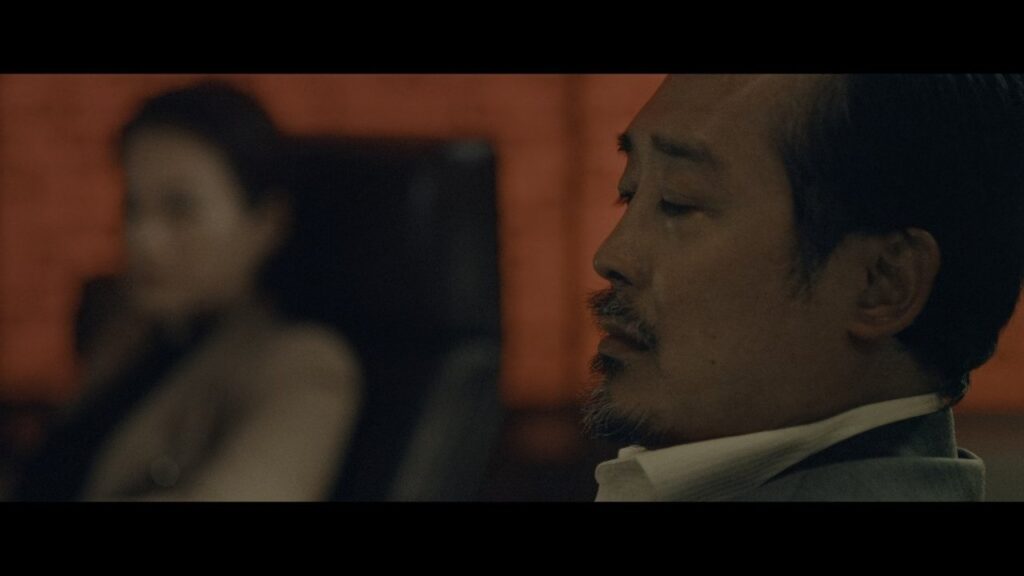
It’s true that there are “only” two major, showcase action sequences, both in the back half of the movie, but that makes Havoc sound a lot more parsimonious than it actually is. I don’t mind the fact that the film is backloaded; it’s brief enough as a whole that having it structured as half wind-up, half-payoff proves a fruitful strategy. The accumulating torque of the first fifty minutes makes the eventual release land all the harder.
The accumulating torque of the first fifty minutes makes the eventual release land all the harder.
Of course, it wouldn’t work as a structure if the two big showcase sequences weren’t both absolute fucking barnburners. If these aren’t the first- and second-best action scenes of 2025, respectively, it will only be in the case that Mission: Impossible – The Final Reckoning completely blows the roof off.
The first is the virtuosic fight through the Medusa nightclub, where Walker, Charlie and Mia are simultaneously ambushed by both Vincent’s crew and Clarice’s footsoldiers. What follows is a three-way melee, beginning as a brawl on the club’s mezzanine floor, where Walker and Mia batter, bludgeon, stab, hack, smash and dropkick their way through the fray (serenaded the whole while by the pulsating synths of Gesaffelstein). Action designer Jude Poyer (a regular Evans collaborator since Apostle, and one of this movie’s key creative voices) finally has the opportunity to give his style of choreography its fullest, most unconstrained expression. These aren’t the practiced, technical martial arts of The Raid; these are the guttural, frantic survival instincts of cornered animals, rendered artful by the precision of the storyboarding and the pre-viz.
It’s in this club fight that Evans is best able to make use of the film’s budget. (I’ve not been able to find reliable information on how much Havoc cost, but we can infer that it was the highest he’s ever had to work with. My guess would be somewhere at the high end of eight figures.) The Medusa isn’t a real nightclub, but was a custom-made set, built by the art department to Evans’s self-admittedly indulgent specifications. Details like the reinforced glass floor-tiles on the mezzanine allow for shots like the one where we look upward towards combatants who’ve just collided with the ground.
The melee transitions to a gunfight on the ground floor, through which Walker escorts Mia and Charlie through a deafening miasma of gunfire. Another way Havoc distances itself from The Raid movies, while emphasising the lineage of Heroic Bloodshed; the action is much more focused on gunplay than fisticuffs. Characters duck and weave and find cover in ways that evoke the back-and-forth exchanges of kung-fu movies, only expressed through the medium of bullets. Fixtures and furniture explode into splinters; bodies caught in fusillades of gunfire dance in slow-motion as they fall.
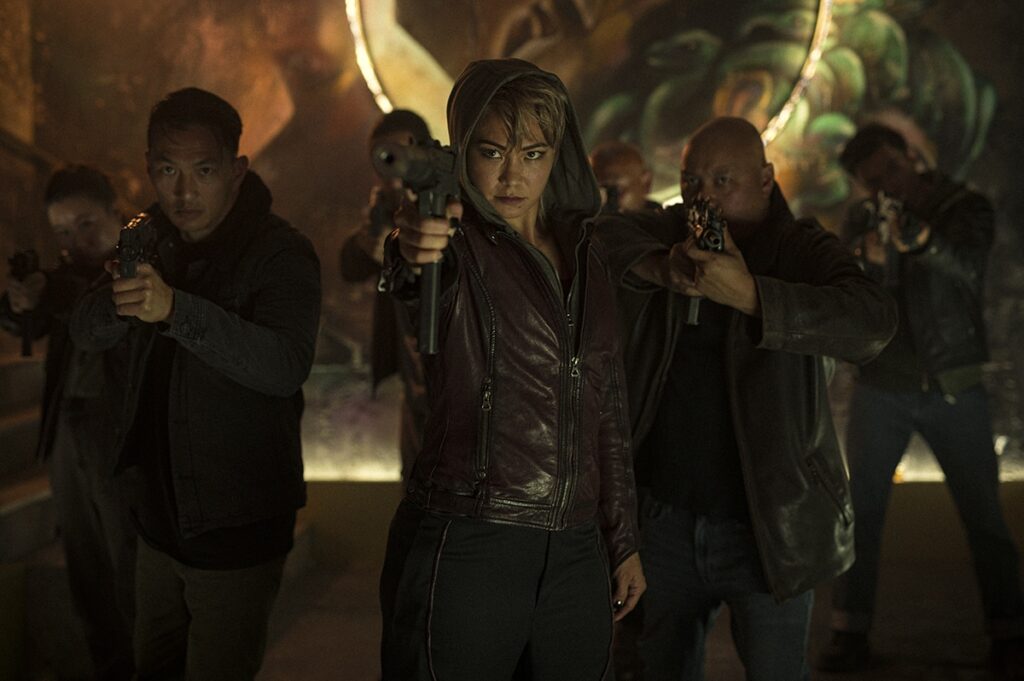
The Medusa setpiece is almost nine minutes of uninterrupted carnage, and would be worth the price of a month’s Netflix subscription all on its own: but Havoc has yet to top itself. For its final act, all of the plot’s forces converge on a remote fishing cabin where Walker takes Charlie and Mia to hide out. What comes next is a sequence that gets closer to the “desperate last stand” energy of the climactic scenes of The Wild Bunch or The Killer than anything else I’ve seen from the 21st century. What begins as a siege – with our heroes taking potshots at attackers from the cabin’s windows – quickly devolves into a free-for-all, Clarice’s forces bursting into the flimsy shack from all directions like a zombie horde.
In close-quarters, the protagonists use fish-hooks and filleting knives and harpoons to push back the assault. It’s a frenzy of bloodletting so intense that I simultaneously wanted to gasp, laugh, and cheer. It climaxes with Walker’s struggle with Clarice’s head enforcer, a nameless assassin played by Michelle Waterson (an in-real-life UFC fighter, and the subject of the documentary Fight Mom), the final beat of which almost made me jump out of my chair.
It’s a frenzy of bloodletting so intense that I simultaneously wanted to gasp, laugh, and cheer.
I was surprised to read that Evans didn’t write Havoc with Tom Hardy in mind for the part of Walker. If that really was the case, then he was a coup of casting; Hardy brings life to Walker that isn’t evident in the script. The English actor’s idiosyncrasies have only grown more pronounced as he’s moved into middle-age; at times, he seems to be flirting with the same mysterious energy that animates Nicolas Cage. The boyish good looks that were evident as recently as Inception have since hardened and weathered; his profile is increasingly distinctive by virtue of his prominent jug-ears, his thick lips, and his bulbous potato of a nose. He’s not ugly, but he’s persuasive as a character from whom life and experience have extracted a toll. He’s the kind of cop I imagine his Max Rockatansky would have been, if the world hadn’t fallen quite so thoroughly.
It’s easy to imagine how another actor might have played Walker much more woodenly; as a glowering, stoic bore. Hardy’s Walker is a lot more interesting to watch than that; expressive in his line deliveries and his body language. He moves around with a stooped posture, shoulders defensively hunched forwards, walking with a bow-legged gait. (In an interview with Letterboxd, Hardy talks about taking influence from the behaviours of gorillas and orang-utans.) He talks quickly, his voice husky, his words under-articulated, his accent from somewhere in the Uncanny Valley. There isn’t a single interaction in the movie where he looks at ease, either with himself or with his interlocutor. He vacillates between too much eye-contact and not enough, constantly gesturing and fidgeting, anxiously courting challenges or threats. (I don’t know if this was the intended reading, but it occurred to me that Walker might be somewhere on the spectrum.) There are points when the performance got to be a bit much, honestly; a few line-readings veer closer to the vaudeville routine from the Venom movies than I would have expected or preferred. On the whole, though, it’s a novel variant on the “maverick cop” archetype; one that gives the movie a bracing, nervous charge throughout.
(It probably also bears mentioning that Hardy is the real deal as far as physicality is concerned. He holds a purple belt in Brazilian jiu-jitsu, and has taken home gold medals from regional tournaments in his mid-40s. This didn’t necessarily inform the choreography – Walker isn’t a jiu-jitsu practitioner, even if Hardy is – but the burly, hefty forcefulness he brings to the action scenes emerges from something authentic.)
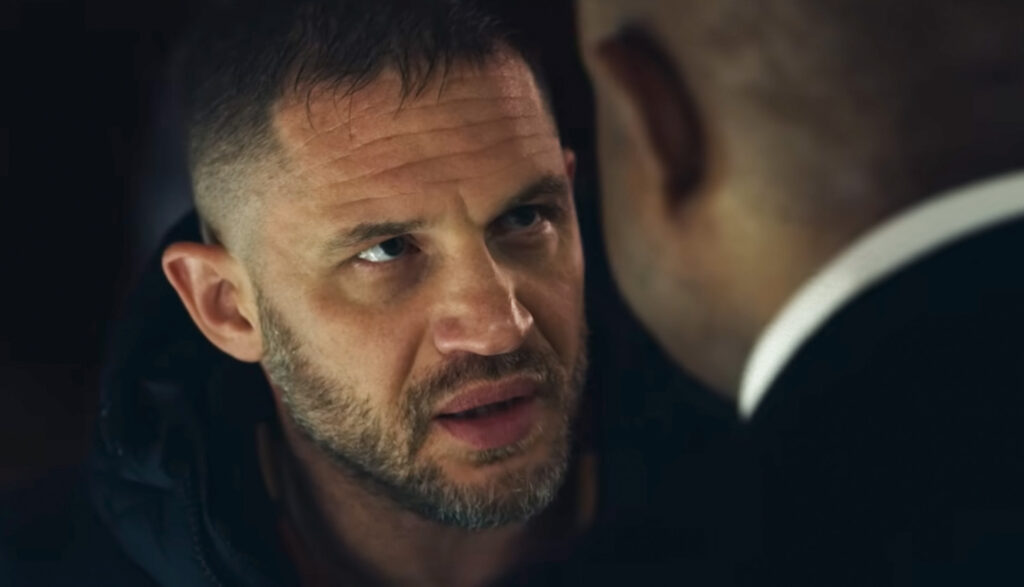
It’s a good thing Hardy was present for the role, because on the page, Walker is a complete cipher. He’s a rough sketch of a maverick cop character, drawn from the memory of a hundred other maverick cop characters. From scene to scene, it’s almost impossible to get a steady bead on his psychology. In some scenes he’ll be utterly ruthless, like the one where he interrogates a suspect who’s in the middle of surgery from a back-alley doctor, by pushing his thumb into the poor sod’s open entry wounds. In others, he’ll betray disarming sensitivity, like when he comforts Cortez’s wife, offering cryptic assurances that her comatose husband wasn’t involved in the terrible thing his crew did. It’s not so much that the character is multifaceted, but that these scenes feel like they belong in two different movies.
It’s a good thing Hardy was present for the role, because on the page, Walker is a complete cipher.
As for that terrible thing that Walker can’t speak openly about: they killed an undercover cop. While in the course of blackmailing the DA prosecuting Lawrence Beaumont, a UC stumbled upon their operation, and they took the appropriately drastic measures. (Something that softens this character beat considerably: it was Vincent who killed the witness, not Walker. Indeed, Vincent did so over Walker’s express objections.)
This is the line that Walker feels he’s crossed; that’s made his relationship with his family and his profession untenable. It’s the reason why he has to beg his wife over the phone to be allowed to bring his daughter a hastily-bagged gift on Christmas Eve; it’s the reason Beaumont can coerce him into doing his bidding with the threat of “one phone call.”
There’s a phantom of a character arc, here; in the film’s last scene, Walker kills Vincent, and in so doing, symbolically divests himself of the guilty secret he’s held from the world ever since the death of that UC. The final shot of the movie has the camera slowly zooming in on Walker’s exhausted eyes, reflecting alternately flickering blue and red lights. It’s implicit that if Walker survives his gunshot wounds, he’ll spend the rest of his life in prison. But, by virtue of the Herculean effort he made to save Charlie and Mia, he’s been cleansed of his moral contamination.
Cool, in theory! It’s the kind of melancholy, turbo-operatic gesture that closed out John Woo classics like A Better Tomorrow, The Killer, and Bullet in the Head. It doesn’t quite land in Havoc, though, because the viewer doesn’t have the requisite context for the demons Walker is exorcising.
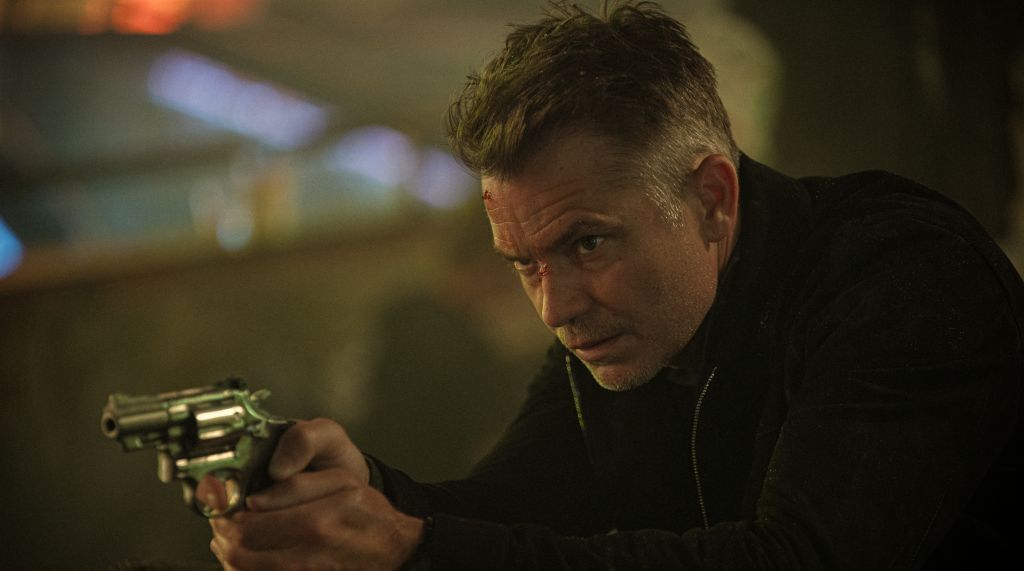
In the film’s very first scene – a prologue before the opening title card – Walker soliloquises in voiceover about the choices one makes in life; about the justifications we tell ourselves for transgressive deeds; that they’re for our family, and our kids. (This prologue is, BTW, easily the worst scene in the whole film. It’s the only part of the film that features voiceover, and Hardy’s mush-mouthed line readings are uniquely ill-equipped to deliver overwrought narration about man’s moral condition.) For all the vagaries and self-recrimination in this monologue, though, I’m left wondering: what exactly were Walker’s family’s circumstances that he needed to make such unjustifiable choices? What were the details of the Faustian bargain he made with Beaumont? Why, sir, are you a dirty cop in the first place, if you apparently have such a conscience about it?
Something that stood out to me, while scrubbing through this film for review purposes, is that we never see where Walker lives. We have no idea what this guy’s life looks like when he’s off the clock. Gareth Evans has repeatedly cited The French Connection as an influence for Havoc. Now, it’s been years since I last watched The French Connection, but there’s a scene in it that’s always stuck with me, long after the details of its plot have faded. Popeye Doyle’s partner has to effectively break into the detective’s pigsty of a bachelor pad. The hungover, nude Popeye groggily peels the bedsheets off his face, and directs his partner to unlock his ankle where it’s been cuffed to the foot of his bed by his most recent one-night stand. It’s a potent, darkly funny moment; one that paints a vivid portrait with its mise-en-scène of what an antisocial catastrophe the movie’s protagonist is.
By comparison, Havoc can’t spare the time for portraiture. Most of the cast’s motivations are expressed in little more than a couple of lines of dialogue; enough that their actions from scene to scene are intelligible, but with only the barest whispers of interiority. Vincent and Ching are both utterly one-dimensional villains, grasping for power for its own sake. The story mostly forgets about Walker’s wife and daughter after their first phone conversation, and they don’t even really seem to factor into his putative redemption. There are glimmers of pathos in the margins – I felt sympathetic towards Ellie (Jessie Mei Li), Walker’s idealistic young partner struggling to trust him, and Raul (an avuncular Luis Guzmán), Mia’s protective uncle who helps his niece out of a jam – though, again, that may be due more to the actors’ likeable performances than any nuance of how they’re written.
Most of the cast’s motivations are expressed in little more than a couple of lines of dialogue…
The film genuflects in the direction of an overriding theme about the relationships between parents and children. At one point, Clarice commiserates with Lawrence while holding him captive, about the infinite lengths they’re willing to go to on behalf of their respective sons. This thread finds its full, melodramatic expression at the film’s climax, when she attempts to force him to shoot Mia in front of Charlie – taking from Charlie the most important person in his life, just as (she believes) Charlie took Tsui from her. It’s a dilemma that’s short circuited when the final gunfight breaks out, and in grandiose slow-motion, Lawrence takes a bullet meant for Charlie, saving his son’s life at the cost of his own.
Again, there’s the outline of something dramatic here, reminiscent of John Woo’s golden age. Again, it doesn’t really land, because Lawrence and Charlie are too thinly defined; the viewer has almost no context for their relationship. There’s a line of dialogue to the effect that they’ve been estranged since Charlie’s mother died, but any notion of who his mother was to him, or what happened after her passing that prompted Charlie to start associating with the kind of street rats who get in debt to the Triads, is an exercise left entirely up to the viewer’s conjecture.

So, yeah: as a character-driven story, there’s really nothing here, or so little as to make no difference. And I’m not persuaded that it matters. As with all of Evans’s previous movies, the point isn’t to create characters with rich inner lives and elegant arcs. Even if such a character showed up in one of his films (as I’d argue was the case with Uco in The Raid 2), they’re a by-product, and probably an accident. No, the point is the energy; the pageantry. The point is to see a primordial stew of genre tropes reach its ultraviolent boiling point.
So, yeah: as a character-driven story, there’s really nothing here, or so little as to make no difference.
For all that Havoc outwardly presents itself as a grim, bloody tale of morally compromised people losing the things most important to them, at its heart is a spirit of revelry and fun. The hyperbolic nature of the action is all in the spirit of play; the viewer is invited to indulge in the grown-up version of schoolyard cops-and-robbers games, vicariously living out the fantasy of being tough, dangerous people in extreme situations. It has a healthy relationship to its own essential frivolity, and it delivers its frivolous pleasures more effectively than ~90% of its contemporaries.
Havoc is not Evans’s masterpiece. It’s not the perfect, relentless, survival-horror gauntlet of The Raid; nor is it the massive, sprawling gesamtkunstwerk of action cinema that The Raid 2 was. It’s more of a median between the two, which isn’t quite as compelling. But I still got the buzz I was looking for; the hairs standing up on my forearms; the gasps and shouts and laughs of incredulity at the gory punchlines.
I can sort of understand why its reception at time of writing (67% on Rotten Tomatoes; 2.7/5 on Letterboxd; 5.8/10 on IMDb) has been relatively tepid. For viewers less chronically action-pilled than myself, it doesn’t do much to defend itself against accusations of being “generic” or “cliched.” Even among recent Netflix Original action movies, it doesn’t match the superficial virtuosity of Sam Hargrave’s Extraction 2, or the gut-rupturing excess of Timo Tjahjanto’s The Shadow Strays. (Though I think it’s better than both of those movies at the level of pacing, structure, and rhythm.)
It seems like a film that would be received more warmly as part of a larger body of work, if Evans was cranking out a new movie once every year or two. It doesn’t quite feel up to the task of being his grand comeback to feature-length action cinema after eleven years away.

It probably doesn’t help its reputation that it was released as an exclusive for Netflix (the sloppiest of the home-subscription slop-vendors). A streaming-only release that deprives audiences of the immersive qualities of its presentation, combined with a brusque, two-syllable title and an incredibly boring poster that’s just a front-facing mugshot of Tom Hardy: this is the poisoned chalice of Netflix. On the one hand, they’re happy to front a lot money for an auteur-led project that traditional studios might not; on the other hand, they bury it in their dragon’s-hoard of content, absent the curation that would differentiate it from mediocrities like The Gray Man, or sub-mediocrities like Heart of Stone.
The hyperbolic nature of the action is all in the spirit of play; the viewer is invited to indulge in the grown-up version of schoolyard cops-and-robbers games…
In the good news column, though, it seems to have been a big hit for the streamer. In its opening week, it handily topped Netflix’s charts with 29.8 million views. (Gratifyingly, it surpassed the Russo Brothers’ megabudget turd The Electric State’s debut by quite a wide margin.) Even if he’s confined to streaming for the moment by his multi-film deal, Havoc’s success leaves Evans in a strong position, potentially with the latitude and the financing for more ambitious projects to come. Hopefully ones with smoother productions.
- Review Series: Gareth Evans
Is It Good?
Very Good (6/8)
Andrew is a 2012 graduate of the University of Dundee, with an MA in English and Politics. He spent a lot of time at Uni watching decadently nerdy movies with his pals, and decided that would be his identity moving forward. He awards an extra point on The Goods ranking scale to any film featuring robots or martial arts. He also dabbles in writing fiction, which is assuredly lousy with robots and martial arts.

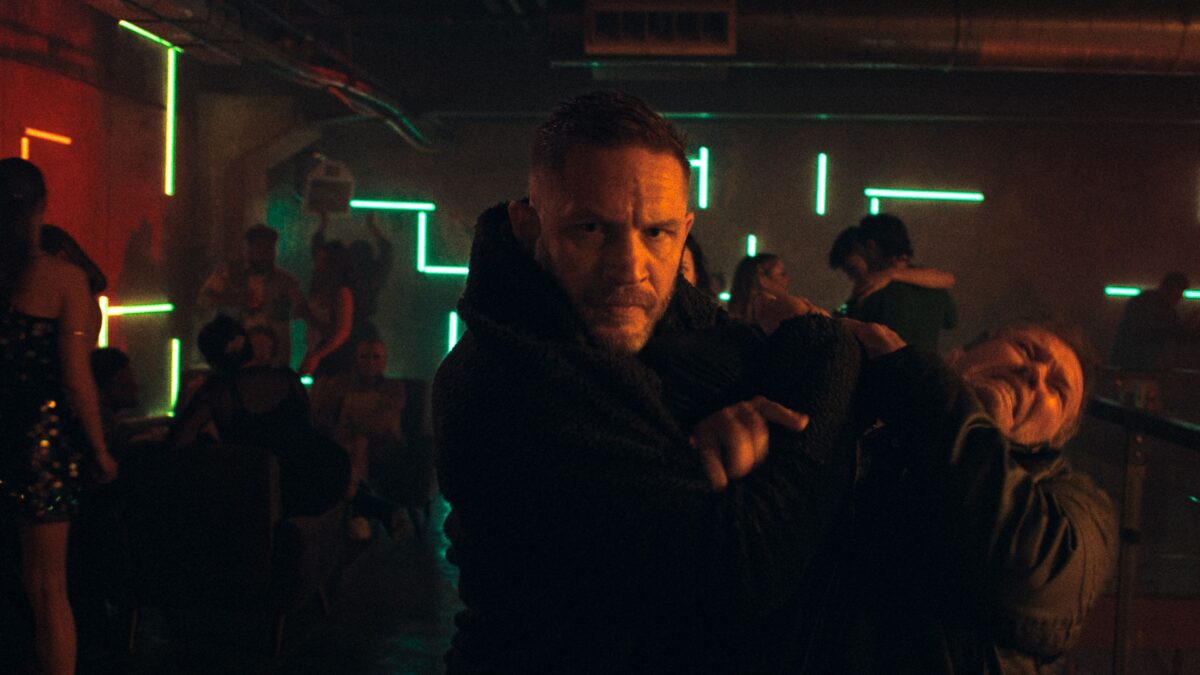
2 replies on “Havoc (2025)”
fantastic review, andrew! “with all the mercy and equivocation of a thermonuclear bomb,” lmao — exactly the type of character i love. i let this one slide off my radar, but now i feel like i have to check it out.
Cheers, Rioghnach! Yeah, I liked Clarice a lot – she’s thinly written, all the characters are, but Yeo Yann Yann brings a lot of gravitas to the part.
Curious to hear your thoughts if you do check it out!